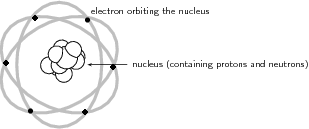

Pudding is bread like food in which plum (fruit) is embedded or evenly distributed. This cathode-ray tube experiments led to Thomson's Plum Pudding model of the atom. J.J Thomson concluded that this beam of light must contain negatively charged particle since opposite charges attract.

Thomson proposed the plum pudding model of the atom, which had negatively-charged electrons embedded within a positively-charged 'soup.' How do we know that the cathode rays travel from cathode to anode 1. J.J Thomson performed cathode-ray tube experiment by passing high voltage into low pressured gas tube, the beam of light produced were seen to be deflected towards the cathode (positive electrode), hence the name cathode ray tube (CRT). Thomsons experiments with cathode ray tubes showed that all atoms contain tiny negatively charged subatomic particles or electrons. He built his cathode ray tube with a metal cylinder on the other end. Thompson, conducted his first cathode ray tube experiment to prove that rays emitted from an electron gun are inseparable from the latent charge. Based on the structure of this Plum Pudding, J.J Thomson developed the first atomic model, in which an atom is seen as spherical cloud of positive charge in which negative charges are embedded. What is the Cathode Ray Tube Experiment In 1897, great physician J.J.

Cathode ray tubes are sealed glass tubes from which most of the air has been evacuated. Thomson began experimenting with cathode ray tubes. Cathode-ray tube experiment in which negatively charged particles were observed led to J.J Thomson's Plum Pudding model of the atom. Thomson and the discovery of the electron.


 0 kommentar(er)
0 kommentar(er)
